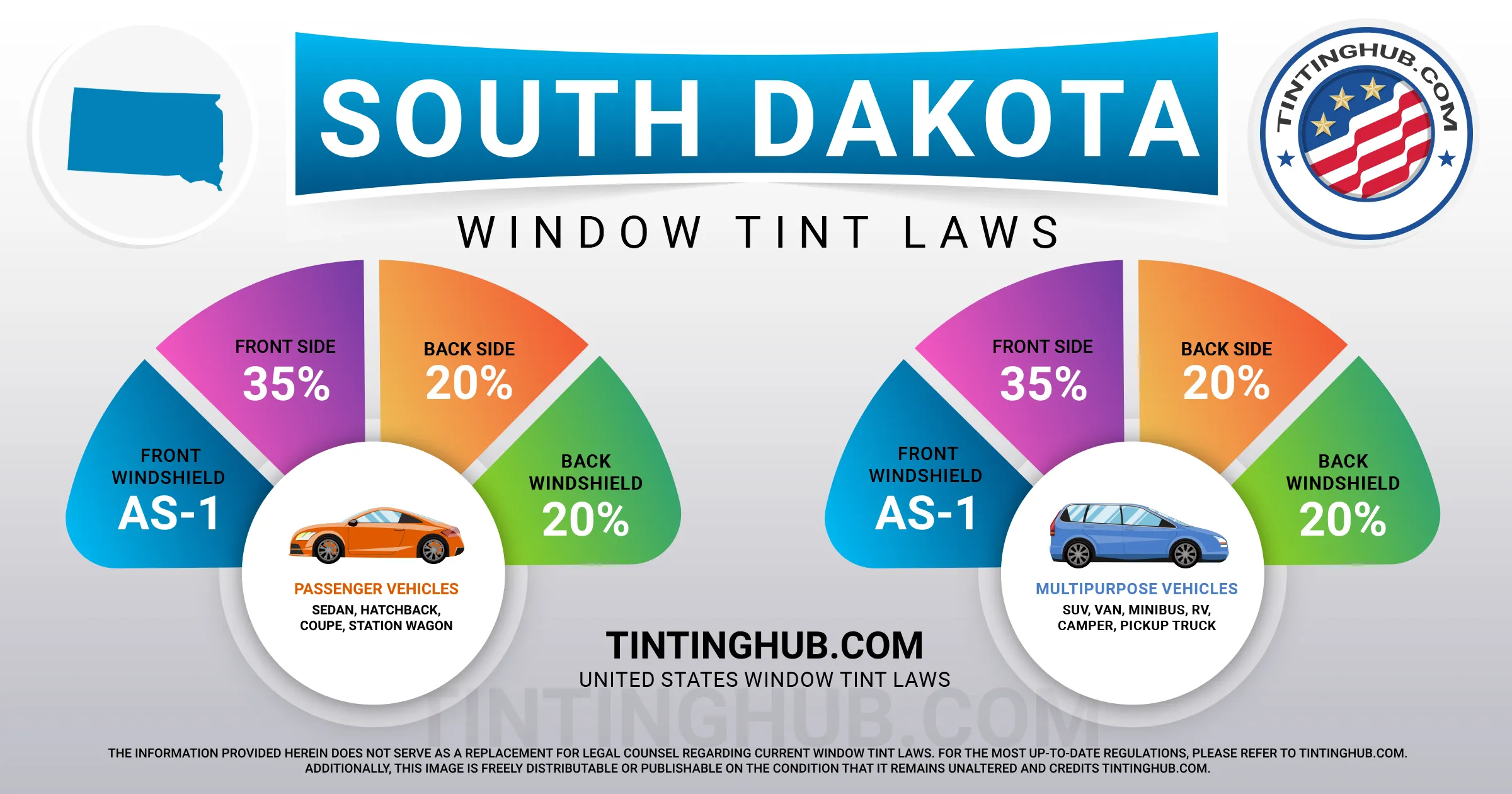South Dakota Window Tint Laws (Last Update 2024)

When it comes to car window tinting in South Dakota, you’re about to navigate through a labyrinth of rules and regulations that have been in place since 1989. To help you sail smoothly through these regulations, we’ve compiled all the information you need regarding the darkness and reflectivity of your window tint, making sure your ride is both stylish and legal. Let’s dive into the specifics:

Understanding VLT in South Dakota
In the realm of car window tinting, VLT, or Visible Light Transmission, reigns supreme. It quantifies the percentage of visible light allowed through your vehicle’s windows. In South Dakota, these percentages are different for sedans and SUVs or vans.
Tint Darkness for Sedans
- Windshield: Non-reflective tint is allowed above the manufacturer’s AS-1 line.
- Front Side Windows: Must permit more than 35% of light to pass through.
- Back Side Windows: Must allow more than 20% of light to pass through.
- Rear Window: Must also allow more than 20% of light to pass through.
Tint Darkness for SUVs and Vans
For SUVs and vans, the rules are nearly identical to those for sedans:
- Windshield: Non-reflective tint is allowed above the manufacturer’s AS-1 line.
- Front Side Windows: Must allow more than 35% of light to pass through.
- Back Side Windows: Must allow more than 20% of light to pass through.
- Rear Window: Must also allow more than 20% of light to pass through.
The Reflective Aspect
Window tint can do more than just add privacy; it can also reflect incoming light, reducing glare and heat. In South Dakota, there are specific rules for how much light your tint can reflect.
Tint Reflection for Sedans
For sedans, metallic or mirrored appearances are a no-go for both front and back side windows.
Tint Reflection for SUVs and Vans
SUVs and vans share the same rules as sedans: no metallic or mirrored appearance for front and back side windows.
Additional South Dakota Window Tint Rules
South Dakota’s window tinting regulations go beyond just darkness and reflectivity. Here are some more important rules to be aware of:
- Side Mirrors: Fortunately, there are no restrictions on side mirrors in South Dakota.
- Restricted Colors: South Dakota does not explicitly restrict any colors of tint.
- Tint Variance: There is a 9% variance allowed.
- Certificates: Film manufacturers must certify the film they sell in South Dakota. Make sure to check with your dealer to ensure they’re using certified film.
- Stickers: A sticker is required to identify legal tinting and should be placed between the film and glass on each tinted window.
- Medical Exceptions: South Dakota law does not provide any medical exemptions for special car window tint.
- Penalties: Violating these tinting laws can result in a Class 2 misdemeanor.
It’s important to note that South Dakota’s tinting laws and regulations may be subject to interpretation in your specific county or place of residence. Therefore, it’s always advisable to cross-check the information with your local DPS or law enforcement authorities.
Stay Informed
Our knowledge of South Dakota’s window tint laws was last updated in 2023. These laws were enacted back in 1989. If you ever come across information that seems outdated or incorrect, please don’t hesitate to reach out to us. We’re committed to providing you with accurate and up-to-date information on window tint laws, ensuring you stay informed and drive within the legal boundaries.
We take pride in being a trusted industry leader, dedicated to keeping you in the know about window tint laws.